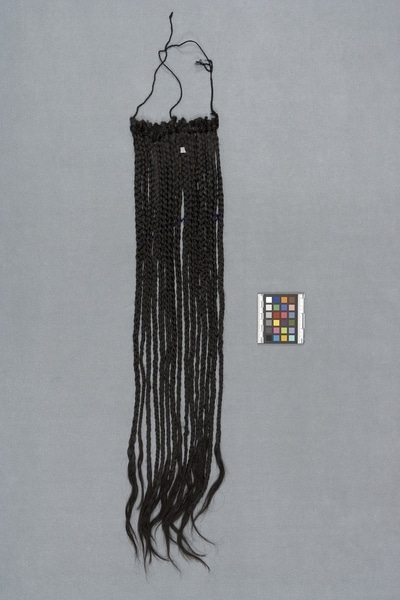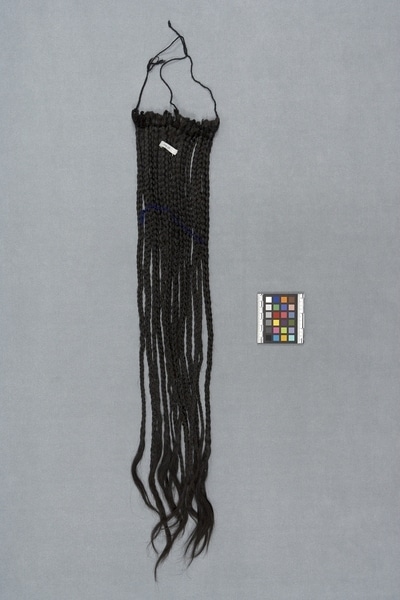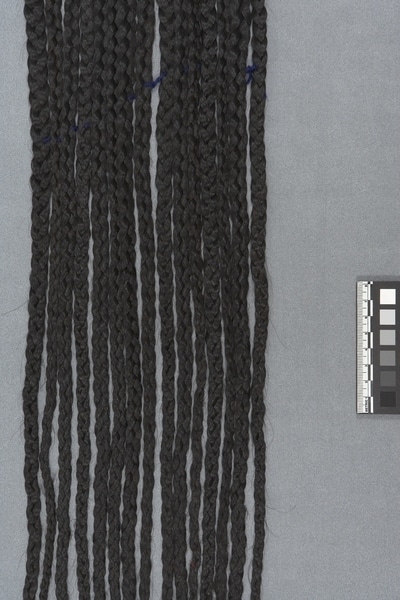Wig Item Number: Sf948 from the MOA: University of British Columbia



Description
Fifteen long tapering braids of black hairs twined together with a black cord at the thicker ends of the braids. Three cords extend from the twining and are joined together. Near the top is blue synthetic yarn twining the braids together. The tapered ends of the braids are unfastened.
History Of Use
The male Sikuri dancer wears the braids under a knitted cap and feathered hat falling down the centre of his back. Taquileno men used to wear their own hair long and braided within this century. The Sikuri dance is done by males who play pan-pipes and females who wear wigs of coloured bands. It is performed on June 24, El Dia de Campesino, during the community fair (July 25 - Aug. 5) and on some Catholic holidays.
Specific Techniques
Hair is braided in 3-strand oblique interlacing.
Narrative
Bought from Candelaria Cruz Machaca who made it within the year from her now deceased husband Augustin Quispe Mamani. Augustin had not worn it when he died in March, 1984. Candelaria and her daughter, Pelagia, both had their hair cut in 1983-84 for use in dance wigs.
Cultural Context
Male Sikuri dancer.
Item History
- Made by Candelaria Cruz Machaca (Maker) in Taquile, Puno, Peru during 1983
- Collected by Mary Frame during 1984
- Owned by Mary Frame before May 8, 1986
- Received from Mary Frame (Seller) and Museum of Anthropology Shop Volunteers (Funding source) on May 8, 1986
What
- Name
- Wig
- Identification Number
- Sf948
- Type of Item
- wig
- Material
- synthetic fibre, wool fibre, hair and dye
- Manufacturing Technique
- braided, twined, plied and spun
- Overall
- height 80.0 cm, width 14.0 cm
Who
- Culture
- Quechua
- Creator
- Candelaria Cruz Machaca (Maker)
- Field Collector
- Mary Frame
- Previous Owner
- Mary Frame
- Received from
- Mary Frame (Seller) and Museum of Anthropology Shop Volunteers (Funding source)
Where
- Holding Institution
- MOA: University of British Columbia
- Made in
- Taquile, Puno, Peru
When
- Creation Date
- during 1983
- Collection Date
- during 1984
- Ownership Date
- before May 8, 1986
- Acquisition Date
- on May 8, 1986
Other
- Condition
- good
- Accession Number
- 1131/0007